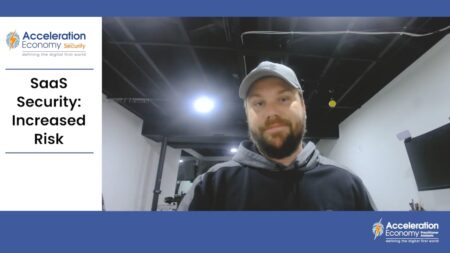In part 2 of this free course from Acceleration Economy, learn how to successfully bridge the gap between buyers and sellers in the ever-evolving business technology landscape.
risk
There are several security risks associated with generative AI, including AI-powered social engineering attacks and evasion of traditional security defenses.
Databricks hosted Microsoft CEO Satya Nadella at its customer event, and the two companies explained how they’re working on trustworthy AI and serving joint customers.
An Endor Labs study sheds light on ways to use ChatGPT in defensive cybersecurity. The company tapped AI to detect malware.
The increasing adoption of cloud services, particularly software-as-a-service (SaaS), has reshaped the role of the chief information security officer (CISO).
A proactive approach to SaaS security — starting with asset management — can protect against data misuse and other potential vulnerabilities.
Manual code reviews have limitations in addressing the risks of hard-coded secrets, leading to a critical need for automated analysis in securing the software development process.
Get a preview of “Selling to the New Executive Buying Committee,” an Acceleration Economy Course on vendor selection criteria for multi-cloud and SaaS cybersecurity.
The PMO helps organizations execute projects successsfully with demand-, program-, and project-management.
Janet Schijns discusses the power of strategic partnerships to navigate challenges, unlock opportunities, and achieve sustainable growth in the digital economy.
Try framing cloud security conversations in terms of business outcomes and using analogies for better results.
Working with multiple partners delivers the best outcomes for enterprises looking to integrate critical elements of modern business infrastructure.
Contextualizing your organization’s key risks and general technology trends with peers is the best way to prepare against future security threats.
In this analysis, Chris Hughes explores a subset of threat intelligence that focuses on malware and specific behavioral threat indicators for malicious actors.
Chris Hughes reviews a new CISA publication, which explains why cybersecurity risk must be moved away from consumers to “secure by default” products.
Rob Wood explores how organizations should think about generative AI models from a risk perspective, with a special focus on the conversations between security leaders and the C-suite.
Generative AI’s rapid rise makes it imperative for security teams to establish policy frameworks and guardrails in order to mitigate risk.
Business leaders today need to consider the risk of not keeping pace with modernizing their businesses. Tony Uphoff explains why.
Cybersecurity data can empower C-suite executives to make informed decisions, protect their organization, and drive business growth.
Aimed at business decision-makers, this guide covers the steps needed to put an effective data governance policy in place.




















